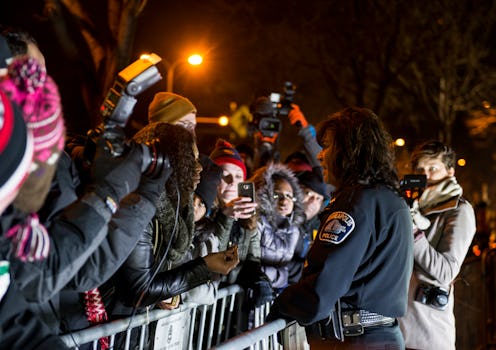News
Video Of Jamar Clark's Death Should Be Released
After months of refusing to release video showing the fatal shooting of 17-year-old Laquan McDonald, Chicago officials made footage of the incident public on Tuesday in accordance with a court order. Police and city officials in multiple cities have claimed releasing video of shootings could compromise investigations, but the refusal by Minneapolis police to release video of an officer-involved incident has resulted in violence against protesters. Demonstrators' resolute demands for facts on police shootings around the country speak to the need for Minneapolis officials to release video of Jamar Clark's death sooner rather than later.
Chicago Mayor Rahm Emanuel urged citizens to remain peaceful following the release of graphic footage showing McDonald's death. The video, which shows Chicago police officer Jason Van Dyke shooting McDonald 16 times, came in conjunction with the announcement of Van Dyke's first-degree murder charge for the Chicago teen's death. "I understand people will be upset and will want to protest when they see this video," Emanuel said at a press conference.
Chicago police had long refused to release footage of the event, which happened on Oct. 2014, despite numerous requests by legal officials, journalists, and watchdog groups both through the Freedom of Information Act and independently. The office of Illinois' Attorney General, Lisa Madigan, released a statement in early November stating the officials' refusal was a violation of the act.
Chicago police released the video on Tuesday, just hours after three men opened fire at a protest in Minneapolis, where demonstrators were asking for answers regarding the death of Jamar Clark. The shooters were allegedly part of a white supremacist group who have made appearances at a number of the protests, Miski Noor, a Black Lives Matter media contact, told the Minneapolis Star Tribune. The five protesters shot during the demonstration were taken to medical centers in the area after sustaining non-life-threatening injuries.
Protesters have maintained a nearly constant presence outside the Fourth Precinct police station in North Minneapolis since the fatal police shooting of Clark on Nov. 15. Among demonstrators' demands is the release of footage showing the altercation between Clark and two Minneapolis officers. One of the officers fatally shot Clark, who was unarmed, after he allegedly interfered with paramedics' efforts to treat an assault victim, Clark's girlfriend. Clark was taken to Hennepin County Medical Center, where he later died.
Meanwhile, police have contradicted witnesses statements' claiming Clark was handcuffed or unable to use his hands at the time of the incident. State officials also refused to release any video of the shooting, stating that doing so could affect the ongoing investigation and that no footage shows the incident in full. Drew Evans, Superintendent of the Minnesota Bureau of Criminal Apprehension, said it could take two to four months before the investigation is complete and officials release the footage.
It is this delay in releasing footage that has resulted in further violence and growing distrust in law enforcement, however. Following Clark's death, Noor stated, "We have zero faith in this Police Department's desire to keep our community safe." Demonstrators have pledged to remain camped outside the police station until their demand for release of footage is met, and police and city officials should consider their responsibility to address citizens' demands for concrete facts about Clark's death.
